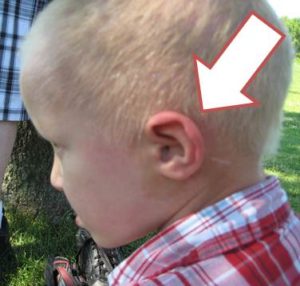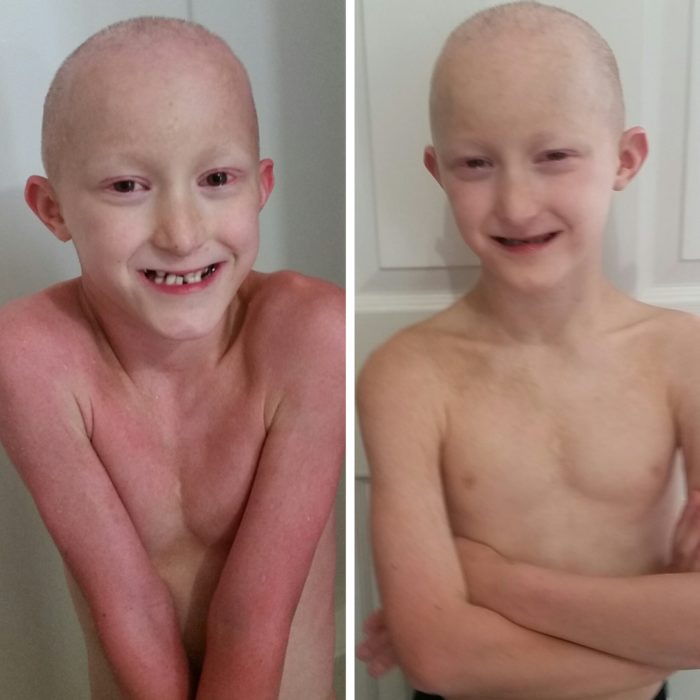People with certain types of ectodermal dysplasia are not able to sweat normally. Because of this inability to sweat, people with this symptom need to be especially careful in warm or hot environments.
Not all people who are affected by ectodermal dysplasias will experience this symptom. Along those lines, an inability to sweat can occur on its own, as part of another condition or otherwise outside of ectodermal dysplasias. If you or a loved one is experiencing issues with sweating, see our resources on finding a diagnosis.
Find Resources for Diagnosing Ectodermal DysplasiasAbout Hypohidrosis
The inability to sweat is called hypohidrosis and is caused by a decrease in sweat glands. However, you might also hear this condition referred to as anhidrosis, meaning no sweat glands. We typically use hypohidrosis, meaning a diminished number of sweat glands. Typically, people do have some sweat glands on their body (rather than a complete absence), but they may not be functioning normally.
Sweat glands and ectodermal dysplasias are more intertwined than many may realize. Most people think about hypohidrotic ectodermal dysplasia (HED) when they hear hypohidrosis. However, people affected by other types of ectodermal dysplasia may experience this symptom as well.
Learn more about the connection between sweat glands and ectodermal dysplasias.
Symptoms Resulting From an Inability to Sweat
The following symptoms can result from an inability to sweat normally.
Does ectodermal dysplasia affect sweat glands?
Yes, many types of ectodermal dysplasia can affect sweat glands. Sweat glands are a type of ectodermal structure that play an important role in regulating body temperature by producing sweat, which cools the body as it evaporates from the skin. In some types of ectodermal dysplasia, such as hypohidrotic ectodermal dysplasia (HED) , the sweat glands are either absent or underdeveloped, which can lead to a reduced ability to sweat (hypohidrosis) in affected individuals.
High Fevers
Reduced sweating may result in very high fevers, because the body regulates its temperature by sweating. Often, the first clue that the sweat glands are absent or not functioning normally is an elevated temperature. A dermatologist can then determine if you have hypohidrosis by performing a skin biopsy of the scalp.
Elevations in body temperature are often caused by high environmental temperatures, excessive physical activity or heavy clothing. Learn more about how to determine why your child has a fever and how to treat—download our Fever and Ectodermal Dysplasias resource.

Skin Symptoms
When the body temperature is elevated, the skin feels dry or hot and may be flushed or pale. The ears will turn red, and the head will be warm to the touch.
Irritability and Lethargy
Irritability and lethargy may follow the previous symptoms. More serious situations can be accompanied by dizziness and/or nausea and may serve as a precursor to heat stroke.

Prevention and Treatment
Fortunately, in some cases, individuals who have HED may find that their inability to sweat improves during adolescence. However, all people with decreased or absent sweat glands can easily become overheated.
Prevention is the best treatment for elevated body temperature. This is especially important for parents to remember since infants and small children aren’t able to complain about the heat.
Infants born with a type of ectodermal dysplasia that affects their sweat should not be placed in an incubator as this will cause their temperature to rise. Also, swaddling a baby may make the infant too warm as well.
Those with the inability to sweat may participate in almost any activity, including most sports. But, they must take precautions in hot environments if their body temperature may be elevated by strenuous activity. Because of the climate in some parts of the world, the home, school, or place of employment should ideally be air-conditioned.
To learn more, download our resource on How to Stay Cool When You Can’t Sweat.